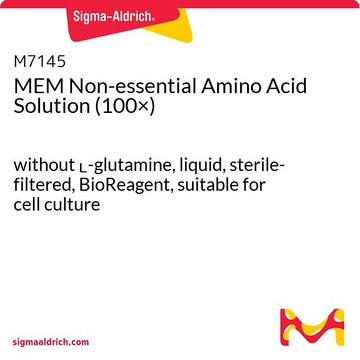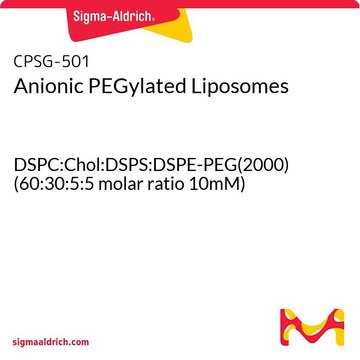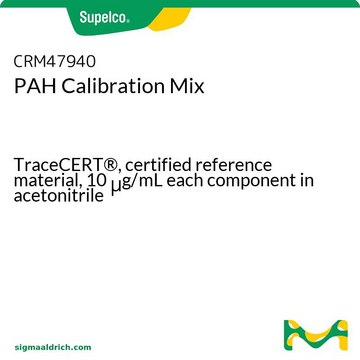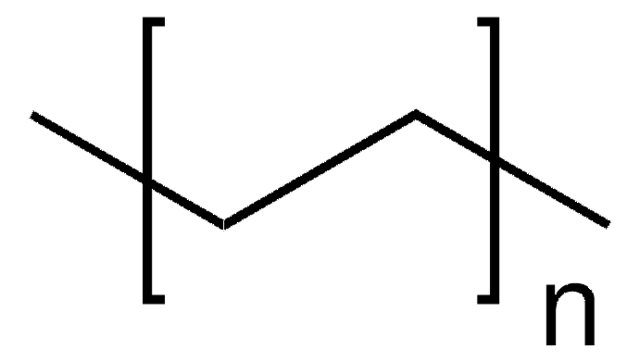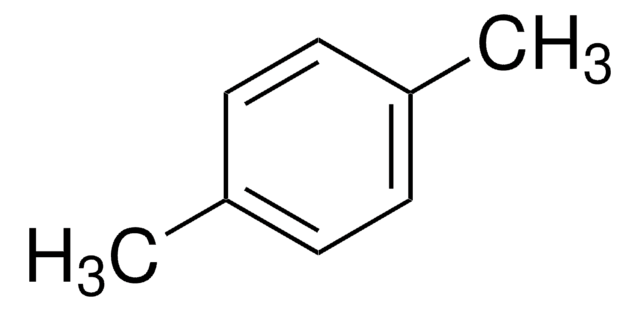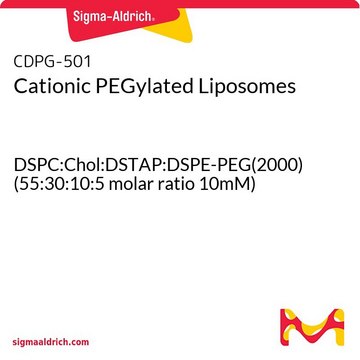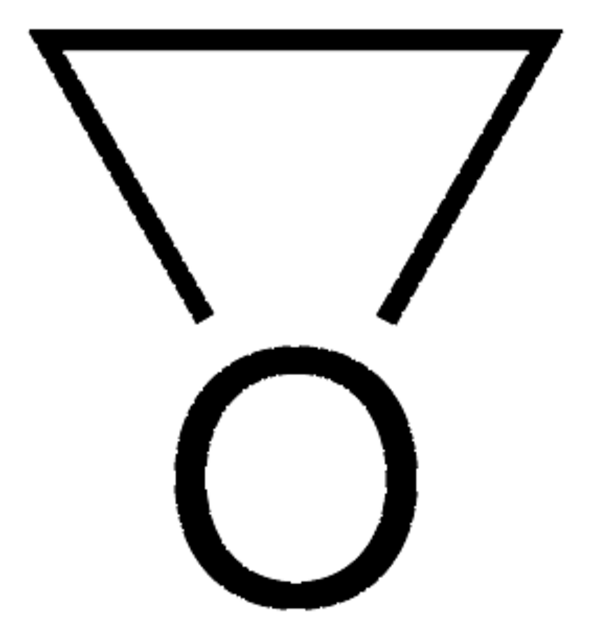LDPG-501
Lyophilized PEGylated Cationic Liposomes
DSPC:Chol:DSTAP:PEG2000-DSPE (55:30:10:5 molar ratio)
Sign Into View Organizational & Contract Pricing
All Photos(1)
About This Item
UNSPSC Code:
12352211
NACRES:
NA.23
Recommended Products
form
lyophilized powder
composition
DSPC:Chol:DSTAP:PEG2000-DSPE (55:30:10:5 molar ratio)
color
white to off-white
mean particle size
100 nm
Looking for similar products? Visit Product Comparison Guide
General description
Lyophilized liposomes product series are freeze-dried liposomes with various types of lipids and wide range of zeta potentials and different properties. These products should be used by scientists who understand liposome formulation and have the proper equipment to check the size, separate non-encapsulated drugs and do the proper assays.
Liposomes are extensively used to study the interaction of proteins, peptides and other molecules with the surface of a lipid membrane. One of the parameters that affects this interaction is the charge of the liposomal membrane. Liposomes are always made in aqueous environment and they are sized to the desired size in liquid state using various methods such as high-pressure extrusion through nano sized pore track etch membranes. In rare occasions, liposomes are freeze dried and proliposomes are formed in the presence of a lyoprotectant such as trehalose. Using a lyoprotectant is necessary in order to maintain the size of the liposomes after rehydration.
To improve liposome stability and enhance their circulation times in the blood, a sterically stabilized, hydrophilic polymer, polyethylene glycol (PEG), has been shown to be the optimal choice for obtaining sterically stabilized liposomes. Using a Neutral Liposome with PEG will protect the liposomes from circulating proteins, improving their plasma clearance and enhancing their therapeutic effects.
Cationic liposomes interact with negatively charged glycoproteins (i.e. mucins) on the cell surface, thereby increasing the affinity and residence time with the target cells, resulting in increased drug delivery.
Liposomes are extensively used to study the interaction of proteins, peptides and other molecules with the surface of a lipid membrane. One of the parameters that affects this interaction is the charge of the liposomal membrane. Liposomes are always made in aqueous environment and they are sized to the desired size in liquid state using various methods such as high-pressure extrusion through nano sized pore track etch membranes. In rare occasions, liposomes are freeze dried and proliposomes are formed in the presence of a lyoprotectant such as trehalose. Using a lyoprotectant is necessary in order to maintain the size of the liposomes after rehydration.
To improve liposome stability and enhance their circulation times in the blood, a sterically stabilized, hydrophilic polymer, polyethylene glycol (PEG), has been shown to be the optimal choice for obtaining sterically stabilized liposomes. Using a Neutral Liposome with PEG will protect the liposomes from circulating proteins, improving their plasma clearance and enhancing their therapeutic effects.
Cationic liposomes interact with negatively charged glycoproteins (i.e. mucins) on the cell surface, thereby increasing the affinity and residence time with the target cells, resulting in increased drug delivery.
Application
- Liposomes are formed upon hydration of the lyophilized formulation. If the lyophilized liposomes are hydrated with solution containing a water-soluble drug, then a large percentage of the drug will stay outside of the liposomes and in non-encapsulated form. It is advised to use a micro dialysis cassette or a spin column using the right-side beads (depending on the size of your drug) and separate the drug encapsulated liposomes from free drug and perform the drug assay in order to calculate the encapsulation efficiency.
- Lyophilized liposomes are mainly recommended to be used with drugs that have a short life in aqueous solution mainly due to hydrolysis. After adding the solution of the drug to lyophilized liposomes, the liposomes should be used immediately.
- Lyophilized liposomes products should be used by scientists who understand liposome formulation and have the proper equipment in order to check the size, separate the non-encapsulated drug and do the proper assays.
- Trehalose is used as a lyoprotectant in all freeze-dried liposome formulation. The size distribution after hydration of the freeze-dried formulation will be around 100 nm.
- Freeze-dried liposomes should be kept at -20°C.
Storage Class Code
13 - Non Combustible Solids
WGK
WGK 3
Flash Point(F)
Not applicable
Flash Point(C)
Not applicable
Choose from one of the most recent versions:
Certificates of Analysis (COA)
Lot/Batch Number
It looks like we've run into a problem, but you can still download Certificates of Analysis from our Documents section.
If you need assistance, please contact Customer Support.
Already Own This Product?
Find documentation for the products that you have recently purchased in the Document Library.
Our team of scientists has experience in all areas of research including Life Science, Material Science, Chemical Synthesis, Chromatography, Analytical and many others.
Contact Technical Service
